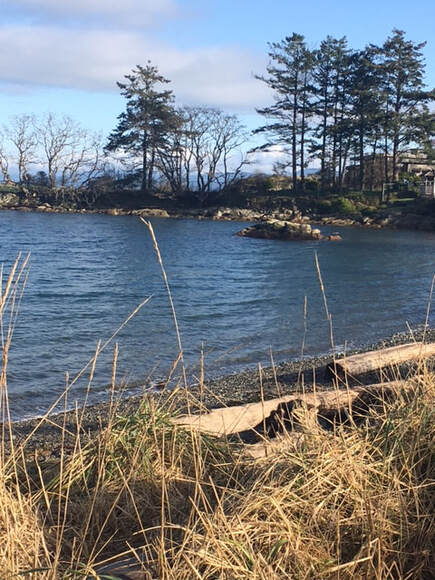Today, Smugglers’ Cove in my home town of Victoria, British Columbia, is a peaceful place where families visit to picnic or just admire the scenery. Not so a few decades ago!
The capital city of British Columbia, Victoria, is known for many things today—tea at the Empress Hotel, the world-famous Butchart Gardens, and all the natural beauty and fascinating history. Seldom, however, does one connect respectable Victoria’s past with smuggling.
Nonetheless, just a few decades ago, the inhabitants of the Gordon-Head/Telegraph Bay shoreline were witness to a very busy smuggling trade environment. An imaginary line, roughly four miles from the Canadian shoreline and two miles from San Juan Island, is the border dividing two nations, and that particular expanse of the Haro Strait was once an area populated by smugglers in their vessels as they plied the waters with their contraband.
Writer and ex-policeman Cecil Clark wrote in 1979:
“At the bottom of Haro Strait…should be the interesting remains of innumerable cans of opium, along with the scattered bones of many an early day Chinese. Not to mention lost anchors, old marine cables, and the 50 year-old, barnacled-covered remains of at least two storm-wrecked rum-runners.”
According to Clark, the first contraband to cross the Strait was back in the 1860s when some whisky was peddled to American troops stationed on San Juan Island.
When this particular scheme was discovered, the bootleggers were placed in the guard room and their stock re-possessed.
Later, when the San Juan group of Islands officially became U.S. territory, they also became an ideal place to store the opium being smuggled to Puget Sound. This raw opium came directly from China and was processed in Victoria in five licensed factories. At that time, there was no Canadian law against possession of opium in any amount.
Smuggling then continued in the form of human cargo; Chinese people were taken across to the U.S. at night, loaded onto small boats from the Victoria inner harbour or from Oak Bay or Maynard’s Cove (Smugglers’ Cove) at the end of 10 mile Point. This type of smuggling continued until well into the 1890s.
By the turn of the century, many characters had become famous in the smuggling game; names such as Ben Ure, Tom Bergus, Bill Jamieson, Larry Kelly, Bob Hill, and “Pig Iron” Kelly were well-known.
Bob Hill claimed the title for being the smuggler who ran the most opium, and “Pig Iron” Kelly was said to have run the most Chinese across the line. His gruesome nickname came about, so it was said, from the fact that he had once “weighted his Chinese passengers with scrap metal before pushing them overboard in the path of an oncoming cutter.” This was his way of getting rid of the evidence!
Tales of those early-day pirates were legendary along the coastline, and their adventures were told and retold for years to come. Pig Iron Kelly’s battle with U.S. authorities continued for many years until one evening in 1909 he dropped dead from a heart attack. Two years earlier, Bob Hill, was drowned in the wreck of the Valencia. At the time of his death, there were many warrants out for his arrest. Larry Kelly (no relation to “Pig Iron”) was finally caught and served a term at McNeill Island where he eventually died.
Soon after the turn of the century, Ben Ure, one of the most notorious of smugglers who had masterminded many a successful smuggling scheme, was also apprehended and put behind bars ending his long career which had begun back in the 1860s.
In 1908, the government finally came down on the lucrative 50 year-old opium trade by banning its sale and possession. However, soon after the First World War when prohibition came into full effect in the U.S. smuggling liquor started up once again across the Haro Strait.
This time it was known as “rum-running” and a new era of smuggling from the shores of Canada began. A story for another day . . . .



